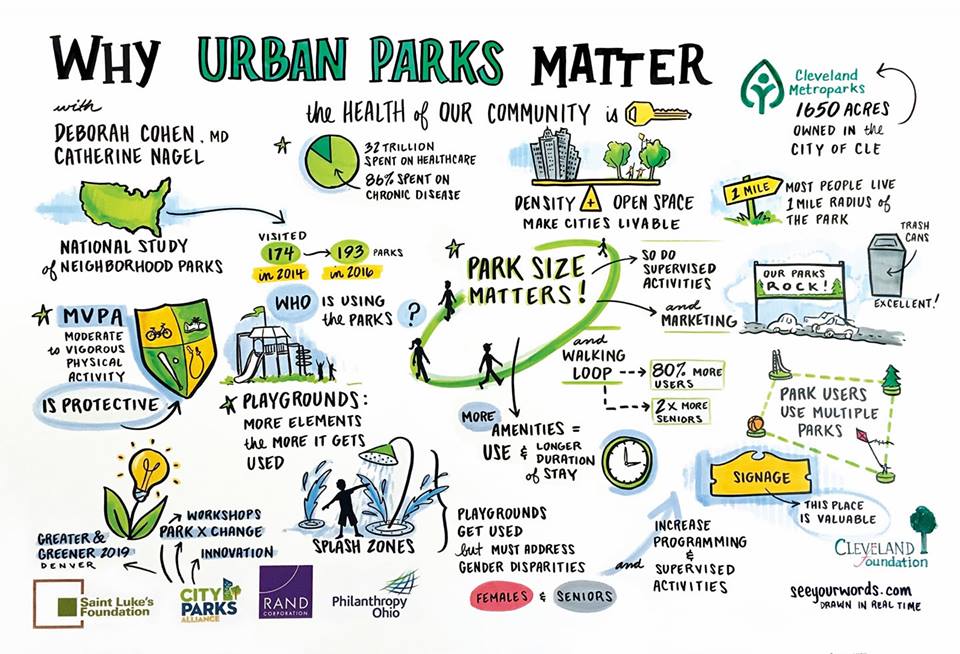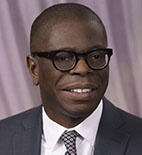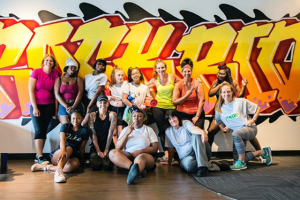By Nelson Beckford – Cleveland Foundation Program Director, Neighborhood Revitalization & Engagement
The City Parks Alliance, RAND Corporation, and Trust for Public Land’s National Study of Neighborhood Parks is a document I reference often. Its thesis is simple: the neighborhood park is an elegant and effective tool to promote physical activity, and minor tweaks can increase park usage and impact.
Why does this matter? The lack of physical activity increases all causes of mortality, doubles the risk of cardiovascular diseases, diabetes and obesity, and increases the risks of colon cancer, high blood pressure, osteoporosis, lipid disorders, depression and anxiety. Not good.
The team studied 174 neighborhood parks in 25 cities, including Cleveland, over a two-year period. The researchers documented park use, including who was using the park – their age, gender, and level of physical activity (sedentary, moderate or vigorous) – and specific activities, as well as park characteristics, amenities, and current conditions. Some of the actionable recommendations and learnings include:
- When you program (or activate parks), usage increases by 48% and physical activity by 38%.
- Parks with walking loops were found to have 80% more users, more than twice as many seniors, and 90% higher levels of moderate-to-vigorous physical activity.
- Marketing, outreach and signage matter – causing a 62% increase in users and a 63% increase in physical activity.
- Well-used parks are much more likely to have champions that advocate for them, and park agencies that measure park use are better positioned to justify public spending to maintain and enhance them.
The study also found that teen girls and seniors are often underrepresented in parks. This naturally led to the question: What are folks doing about this at a national or local level?
Join this free webinar that explores creative models and programs that have successfully engaged these underrepresented demographics in physical activity at their parks and community spaces. I look forward to moderating this expert panel that includes:
- Liz Ferro with Girls With Sole (Cleveland, Ohio), a program that uses free fitness and wellness programs to empower the minds, bodies and souls of girls who are at-risk or have experienced abuse. Girls With Sole has received extensive national attention for its innovative and successful programming.
- Kaci Wehr with The Older Americans Center (Jasper, Indiana), a division of the Jasper Park & Recreation Department, that offers programming tailored to residents ages 55 and over, including exercise and fitness classes that serve a range of fitness levels and see high participation rates. With a growing senior population, the goal of the center is to promote quality of life while creating socially pleasant and positive experiences for all who walk in the door.





